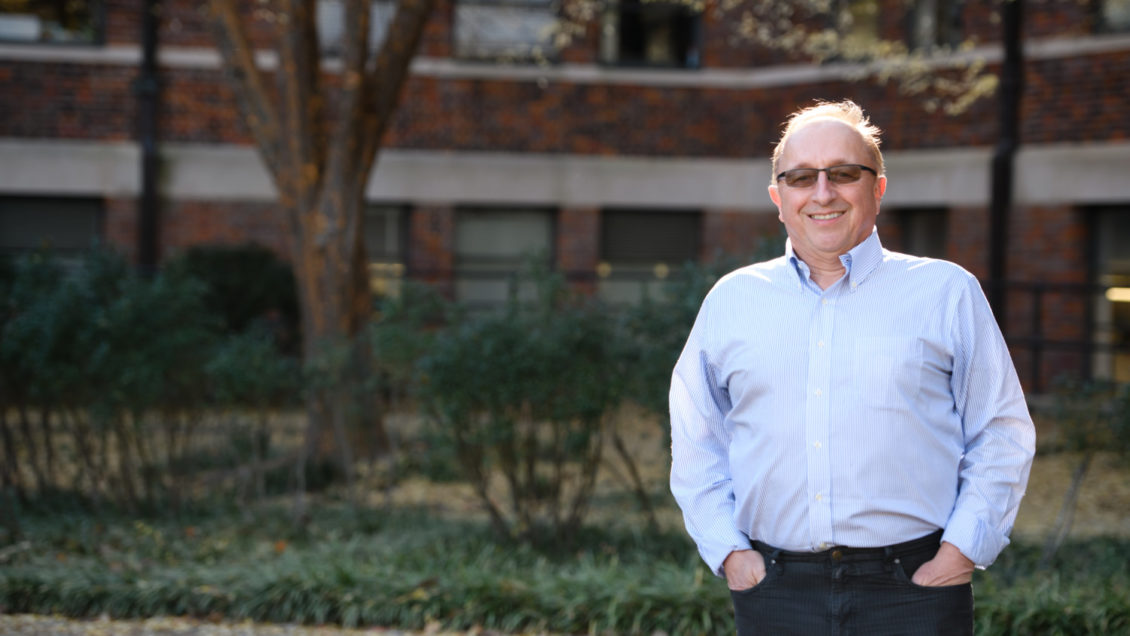[vid origin=”youtube” vid_id=”RhbOKQWL6uE” size=”medium” align=”right”]
This Tiger implements new ways of learning to prepare his students for the future. His innovative research helps him develop materials for new generations.
Meet Marek Urban.
Title: J.E. Sirrine Foundation endowed chair, professor of materials science and engineering and professor of chemistry
Years at Clemson: Six years
What I do at Clemson: My primary responsibilities as a professor are to teach undergraduate and graduate materials science courses as well as to conduct research in polymer materials science, materials chemistry and materials engineering.
My recent research interests are focused on self-healing commodity polymers, new generations of stimuli-responsive materials with adaptable sensing and signaling functions, as well as spectroscopic imaging methods enabling molecular detection of stimuli-responsiveness. Urban Research Group is the only research enterprise in the world equipped with a chemical imaging laboratory. Because of the state-of-the-art spectroscopic instrumentation in the lab, we have been able to publish our discoveries in some of the top scientific journals, like Science and Nature, and have been invited to present keynote lectures around the world.
What I love about Clemson: Clemson provides outstanding opportunities for students to get the best education and college experience, and for faculty to explore new venues of education and research. Combined together, the Clemson enterprise is a unique place that facilitates creativity, collegiality and collaborative opportunities. At every academic institution, we face challenges, but working across disciplines and pursuing nothing less than excellence with the highest degree of professionalism in teaching and research has elevated the Clemson brand to the next level.
My defining moment at Clemson: I was boarding a flight in Atlanta when a man wearing a Syracuse hat took a seat next to me. I introduced myself and mentioned that I work at Clemson. To my surprise, he told me that he had recently traveled from Syracuse to Clemson to see the football game. Although his team lost, he stated that he will never forget his Clemson visit. He explained how he had expected to be greeted poorly, as he was proudly wearing emblems from the opposing team. Instead, as he walked from Death Valley, he was greeted with open arms, with Clemson fans inviting him to their tailgating parties, offering him food and drink and congratulating him for a game well played.
I always knew that Clemson was a special place, but hearing this story from a complete stranger was certainly one of those defining moments. I realized that this is not only a place that is special to those who live and learn here, but a place that is respected by outsiders and that truly practices the values it promotes.
Accomplishment I’m most proud of: We were the first research group to develop self-healing polymers that repair upon exposure to sunlight (or electromagnetic radiation) and commodity polymers that self-heal without any intervention. These scientific studies have been recognized by the scientific community through numerous awards, most recently the American Chemical Heritage Foundation’s Chemical Pioneer Award. Equally important, several research findings regarding self-healing polymers and antimicrobial polymer surfaces have been featured by various media sources, including the New York Times, Forbes, the BBC and others.
Where I see myself in five years: I have three objectives: Move into a new materials science building, establish a major research center and develop a new field of materials that memorize biological events.
Last thing I watched on TV: The Big Bang Theory
Guilty pleasure: Chicken wings
One thing most people don’t know about me: I was a semi-professional hockey player and single-handedly sailed across the Gulf of Mexico.
Related:
Clemson University breakthrough in self-healing materials detailed in journal Science
Maker of self-healing materials gets royal honor
This self-healing material proves the power of weak van der Waals interactions—ACS Chemical and Engineering News
Key-and-lock configuration is crucial to self-healing commodity copolymers—MRS Bulletin
Holding the key to healing—Nature
Want to nominate a colleague to be featured in Meet a Tiger? Contact Jackie Todd at jtodd3@clemson.edu.
Meet more Tigers here, and check out #FacesOfClemson on Instagram.
Get in touch and we will connect you with the author or another expert.
Or email us at news@clemson.edu

